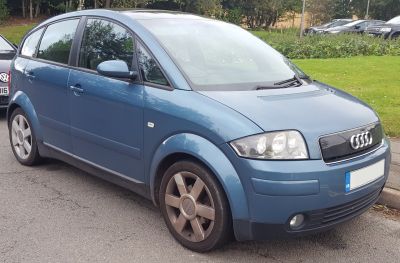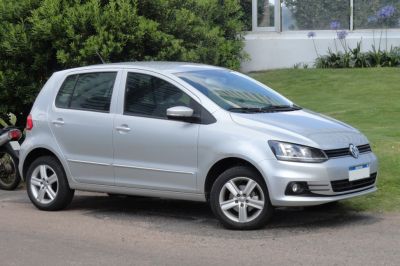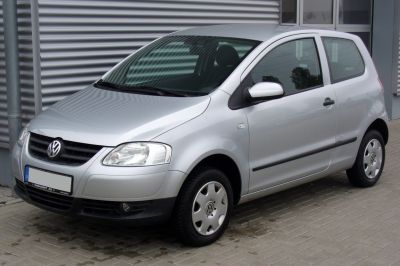 2002 Citroen C3 I (Phase I, 2002) Dimensions, Size & Specs
2002 Citroen C3 I (Phase I, 2002) Dimensions, Size & SpecsMeasurements of the 2002 Citroen C3 I, engineered for optimal performance and comfort
| Dimensions | |
|---|---|
| Length: | 3850 mm151.6 in12.6 ft |
| Width: | 1667 mm65.6 in5.5 ft |
| Height: | 1529 mm60.2 in5.0 ft |
| Trunk Capacity: | 305 liter10.8 cu ft |
| Trunk Capacity (Max): | 1150 liter40.6 cu ft |
| Weight Specifications | |
| Curb Weight: | 978-1072 kg2156-2363 lbs |
| Maximal permitted Weight: | 1463-1539 kg3225-3393 lbs |
| Tire Specifications | |
| Rims Sizes: | 15-inch rims:
|
| Tire Sizes: |
|
The Citroen C3 I (Phase I), introduced in 2002 and produced until 2005, is a subcompact hatchback designed for practicality and urban driving. Measuring 3850 mm (151.6 inches) in length, 1667 mm (65.6 inches) in width, and 1529 mm (60.2 inches) in height, this model strikes a balance between compact exterior dimensions and spacious interior utility. Its curb weight ranges from 978 to 1072 kg (2156 to 2363 lbs), making it lightweight and easy to maneuver, contributing to fuel efficiency and nimble handling.
The C3 I Phase I features versatile cargo space, offering a standard luggage capacity of 305 liters (10.8 cubic feet). For greater storage needs, folding the rear seats expands the capacity substantially to 1150 liters (40.6 cubic feet), making it suitable for carrying larger items or luggage during trips. This flexibility makes the hatchback a practical choice for both city commuting and weekend getaways.
Equipped with rim sizes varying between 13 to 15 inches (including 15, 14.5, and 13-inch options) paired with tire sizes such as 185/60 R15, 165/70 R14, and 165/70 R13, the vehicle offers a range of configurations to suit different driving conditions and preferences. Additionally, the maximum weight the model can handle ranges from 1463 to 1539 kg (3226 to 3395 lbs), ensuring robust capacity for passengers and cargo combined.
Overall, the Citroen C3 I Phase I hatchback exemplifies a compact car optimized for European city lifestyles, presenting efficient dimensions without sacrificing interior space and functionality. Its design and specs cater to drivers seeking a reliable, versatile subcompact car with ample luggage space and manageable size.
Discover the standout features that make the 2002 Citroen C3 I a leader in its class
Have a question? Please check our knowledgebase first.
The Citroën C3 I (Phase I, 2002) features a compact exterior ideal for urban driving. Its length measures 3850 mm (151.6 inches), width is 1667 mm (65.6 inches), and height stands at 1529 mm (60.2 inches). These dimensions provide a balanced footprint that allows for easy maneuverability and parking in tight spaces while maintaining sufficient interior space for passengers.
The curb weight of the Citroën C3 I (Phase I, 2002) ranges from 978 kg to 1072 kg (2155 to 2363 lbs), depending on the specific engine and trim level. The maximum weight capacity or Gross Vehicle Weight Rating (GVWR) is between 1463 kg and 1539 kg (3224 to 3394 lbs). This gives a sturdy balance between lightness for fuel efficiency and enough robustness to carry passengers and cargo safely.
The luggage capacity of the Citroën C3 I (Phase I) is practical for its class. With the rear seats in place, it offers 305 liters (10.8 cubic feet) of trunk space, ideal for everyday shopping or small suitcases. When the rear seats are folded down flat, the capacity expands significantly to 1150 liters (40.6 cubic feet), providing versatility for carrying larger cargo like sports equipment or bulky goods.
The Citroën C3 I (Phase I) typically comes with three rim size options: 15 inches, 14.5 inches, and 15 inches in respective widths of 5J to 5.5J. Tire sizes compatible with these rims include 185/60 R15, 165/70 R14, and 165/70 R13. These sizes balance ride comfort, handling, and economy, and allow some customization depending on driving preferences and tire availability.
Yes, the Citroën C3 I (Phase I) fits comfortably into a standard home garage. Given its dimensions—3850 mm (151.6 inches) length, 1667 mm (65.6 inches) width, and 1529 mm (60.2 inches) height—it is well within typical garage size parameters which usually allow for about 5400 to 6000 mm (212.6 to 236.2 inches) length and at least 2400 mm (94.5 inches) width. This compact size makes it convenient for urban households with limited parking space.
The Citroën C3 I (Phase I, 2002) was introduced as a new model rather than a direct successor to a previous specific compact hatchback under the same naming convention. However, compared to earlier small cars by Citroën, the C3 I offered a more modern, rounded shape with a slightly larger and more spacious body. Its 3850 mm (151.6 inches) length and 1667 mm (65.6 inches) width gave it a better interior volume and luggage capacity compared to older Citroën small hatchbacks, improving practicality while maintaining city-friendly dimensions.
The Citroën C3 I competes well within the subcompact hatchback segment of the early 2000s. With a luggage volume of 305 liters (10.8 cubic feet) expandable to 1150 liters (40.6 cubic feet) with folded rear seats, it offers competitive cargo flexibility. Front and rear passenger space was generally well regarded for comfort in its class. Compared to rivals like the Ford Fiesta Mk5 or Volkswagen Polo from the same period, the C3’s distinct rounded design provided good headroom and a relatively roomy cabin, though it was not the largest in the segment. Its curb weight range of 978 to 1072 kg offered a good balance between agility and stability.
The Citroën C3 I (Phase I) measures 1529 mm (60.2 inches) in height, giving it a tall silhouette for its class which benefits interior headroom, especially for rear passengers. Although ground clearance specifics aren't stated exactly here, the C3 generally had a comfortable ground clearance compatible with urban and light suburban roads, which helped to absorb road irregularities and provided a smoother ride. Its rounded shape and suspension setup emphasized comfort over sporty handling, and the height contributed to an easy entry and exit experience.
The Citroën C3 I (Phase I) is designed to seat up to five passengers comfortably within its hatchback configuration. The interior offers adequate legroom and headroom for a vehicle in the supermini class, aided by its relatively tall body and clever packaging. Front seats provide good visibility and comfort, while the rear bench can accommodate three passengers with sufficient space for average adults on shorter trips. The cabin’s design focuses on maximizing space utility and comfort despite the car’s compact footprint.
The curb weight of the Citroën C3 I (Phase I, 2002) lies between 978 kg and 1072 kg (2155 to 2363 lbs). This weight is typical for supermini or subcompact hatchbacks of its time, striking a balance between sufficient structural integrity and efficiency. When compared to similar European hatchbacks like the Peugeot 206 or Renault Clio from the same era, the C3’s weight is competitive, which contributed positively to fuel economy, nimble handling, and reduced emissions while maintaining decent safety standards.
Discover similar sized cars.

| Model Year: | 2013 |
|---|---|
| Length: | 3825 mm150.6 in |
| Width: | 1670 mm65.7 in |
| Height: | 1525 mm60.0 in |

| Production: | 2000-2005 |
|---|---|
| Model Year: | 2000 |
| Length: | 3826 mm150.6 in |
| Width: | 1673 mm65.9 in |
| Height: | 1553 mm61.1 in |

| Production: | 2015-present |
|---|---|
| Model Year: | 2015 |
| Length: | 3867 mm152.2 in |
| Width: | 1901 mm74.8 in |
| Height: | 1551 mm61.1 in |

| Production: | 2005-2011 |
|---|---|
| Model Year: | 2005 |
| Length: | 3828 mm150.7 in |
| Width: | 1660 mm65.4 in |
| Height: | 1544 mm60.8 in |
